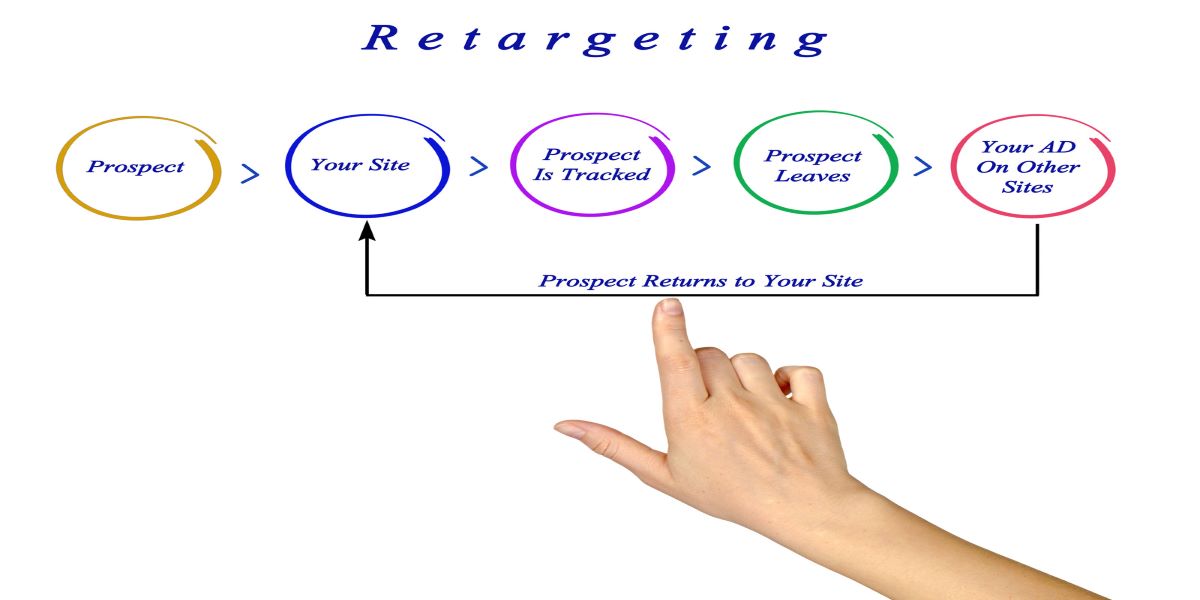More than ever, e-commerce conversion rate optimization means marketers who target customers directly are using retargeting to increase sales.
Why?
Companies can use retargeting not only to bring back web visitors who left without buying or completing a form, but also to deliver personalized advertising that increases ROI and improves conversion rates upon a re-visit to your site.
About 92% of people who visit your website do not intend to buy the products or services you offer. Even if they are interested, they may not be ready to convert yet. In the past, customers were said to require seven touch points with a brand before converting.
Digital advertising has become increasingly saturated since this statistic was first published several years ago. Marketing professionals now believe that the number is much higher.
Retargeting indecisive shoppers is a fabulous way to make them complete their purchases.
Retarget marketing combines two of the most effective online marketing channels. On average, search engine traffic has a conversion rate of around 2%.
For advertisers, this is one of the most effective channels.
If you combine this traffic with display retargeting, your conversion rate will double. If you are looking for search engine optimization in California, we can help.
How Can You Keep Your Ad Campaigns From Becoming Stale?
You have to consider retargeting campaign strategies.
There are many ways to use retargeting, such as social media, video, native and display. As a loyalty tool, retargeting can be used to ensure loyalty by denying competing brands the opportunity to convey their message to your customers.
No matter how you decide to utilize it, a comprehensive retargeting strategy will deliver the most effective results.
Your website can be enhanced with an invisible “pixel” as a retargeting method. Afterward, all of your visitors will be tagged and put into a list. The pixel tracks visitors to your site according to the chosen parameters, such as where they are in the funnel.
Web conversion experts can help you implement this very effective tool.
To reach these audiences, advertisers bid on ad placements across 99% of the web.
While the site is loading, the auction is taking place within milliseconds, and it is possible to use several programmatic advertising platforms, such as Facebook, AppNexus, AdRoll, OpenX, and The Trade Desk.
Many different data points can be used to select the audience for retargeting.
You can, for example, retarget a user based on the items they viewed on your website. Ad copy can be revised with limited quantities (“only 4 left”), time limitations (“only 2 days left”), or price changes (“price going up tomorrow!” or “now 20% off!”).
Through a strategy known as dynamic retargeting, Amazon, Facebook, and other ad platforms allow for this on product pages.
Each day that passes since the user last viewed the item increases the urgency in their ad copy. You can also retarget people based on their activities, such as when they begin checking out or on any other page of the web or app.
Based on your data, you can narrow down your retargeting pool over time. Change the messaging or target different audiences if a campaign isn’t performing well.
When a campaign is performing well, it’s good to keep spending a portion of your daily ad budget on it. As a result, it is important to keep creative variations fresh to avoid becoming stale – and to continuously test new creative ideas.
Despite appearing to yield little in the way of conversions and causing fatigue when you bombard someone with ads for a product they’ve already seen and ignored, it produces the opposite effect. The mere-exposure effect underlies retargeting as a psychological phenomenon.
Essentially, as humans, the more we see something, the more we tend to appreciate it.

Understand the behavior of your web visitors to better retarget them.
Retargeting allows you to reconnect with website visitors. Advertising directly to people who are interested in your brand is cost-effective since you reach those who have shown some interest.
It also allows you to reach individuals who understand your brand and product more often, thereby increasing the likelihood that they will convert.
Lastly, retargeting helps improve SEO by releasing repeat traffic to your website, which is more valuable than just increasing traffic.
Getting the best professional search engine optimization requires exposure to the right audience. A variety of ad marketing techniques should be used, including retargeting. This is a vital step in getting the most out of your advertising spend.
Best Retargeting Strategies
We can help you with your retargeting campaigns, no matter if you’re a beginner or an expert. We’ve compiled seven best practices you can use to make your retargeting strategy effective.
- Understand Your Audience
The purpose of retargeting is to keep in touch with people who have previously interacted with your brand and products. Ensure that your retargeting strategy incorporates different stages of the customer buying cycle and makes use of customer interactions with specific products to serve relevant ads.
With this information, you can provide relevant products and promotions to specific audience segments. Retargeting ads that are focused and personalized reduce cost-per-click and increase success.
- Capture Audience Attention with Dynamic Display Ads
Dynamic display ads allow you to retarget your website visitors by displaying ads that are tailored to reflect the products and images they viewed on your website recently. They remind visitors to come back for more products they are interested in. In addition, accessories and related products can also be recommended.
Dynamic ads ensure that your products are visible across the internet and encourage your customers to buy more in each order and return again and again. Additionally, users who abandoned online shopping carts are encouraged to complete their purchases by this type of advertising.
- Remarket to Existing Customers
As new visitors join and old ones stop engaging, it’s common for email lists to lose responsiveness over time. Continuous drip campaigns make it difficult to overcome this type of churn, so retargeting can help.
Consider retargeting your unresponsive customers who have not purchased in a while. Existing customers may be convinced to buy new products if you show them product-oriented retargeting ads, or you might even be able to upsell some.
- Create Engaging and Quality Content
Show different ads to each audience by personalizing, localizing, and using multivariate testing. Through testing, you can determine which strategies you should use at higher volumes and which strategies need to be optimized before scaling. To enhance brand recognition, ensure that your ads are always branded with your logo.
- Avoid Brand Blindness and Ad Fatigue
When a user sees an ad or group of ads so frequently that they actively ignore them, they suffer from ‘ad fatigue’. Set a frequency cap on your ads to prevent this from happening. You may set the frequency of an ad at 15-25 times per month, for example. Consider decreasing ad frequency for customers who haven’t visited your website recently.
It is also important to rotate your ads – a good rule of thumb is to create at least three different versions of a single ad.
- Use Facebook Page Engagement To Retarget with Form-based Ads
You can reach people who are active on Facebook and interested in your product or brand by retargeting people who interact with your company’s Facebook page. Using form-based ads allows you to collect lead information such as email addresses.
Using email for marketing and relationship-building can offer more opportunities at lower costs. Facebook’s lead-gen ads present users with an intuitive, natural-looking form directly within the app, where users are more likely to feel comfortable filling out the form.

Optimize and do A/B ad testing to see what drives former visitors back to your site.
- Maximize Results by Optimizing
Ensure that your tracking pixels are placed on all of your website’s pages. The behavior of visitors between arrival and checkout provides insight into their interest level and the types of products they’re attracted to. Retargeting efforts that are successful will focus on actionable audiences rather than on low-quality visitors. Using pixels to burn lists is also an efficient way to spend your ad dollars.
By creating lists of users who reach the order confirmation page, you can stop retargeting them after they make a purchase. You should, however, retarget them in new campaigns with different messaging for re-selling, upselling, and encouraging social media engagement.
An effective digital marketing campaign is essential for any business. By making people aware of your brand, you bring them to your website, and many of them become loyal customers. Having learned how to retarget online users with ads, you are now ready to start putting it into practice.
Don’t worry if you’re still having trouble getting it to work – Avita Digital can help. As an expert in Digital Marketing in Calabasas, we have decades of experience in the digital marketing industry, we know digital retargeting inside and out and can optimize it for your business.
ABOUT AVITA GROUP
Avita Group is a digital marketing firm based in Calabasas, California. We specialize in organic Search Engine Optimization (SEO), Pay Per Click (PPC) campaign management, Online Reputation Management (ORM), website creation and conversion optimization.
The Avita Group team boasts a collective experience of over 25 years in the industry and has worked with a variety of multi-million dollar companies to help them improve their ROI, build better brand awareness, and mitigate negative online reviews and results.
Contact us today for a free consultation.
